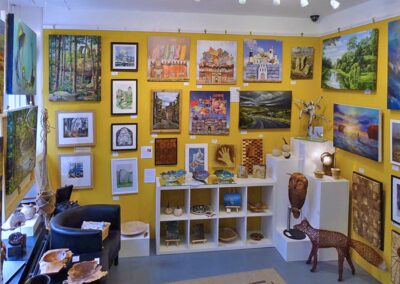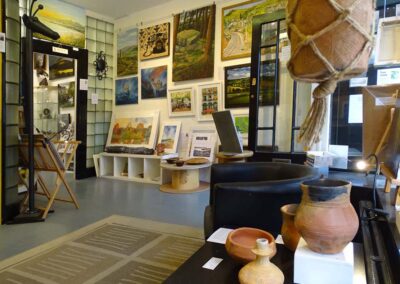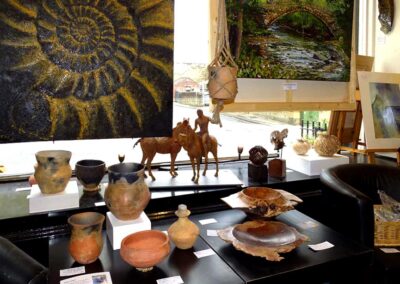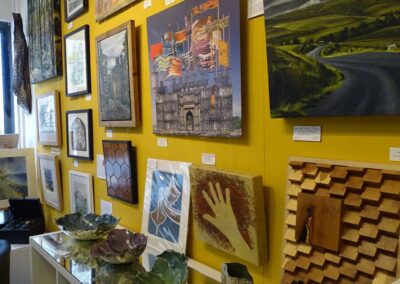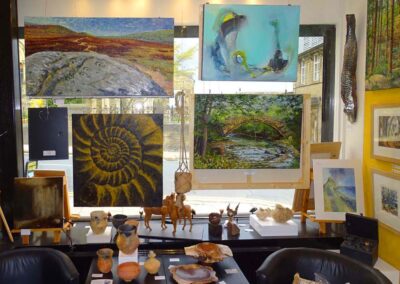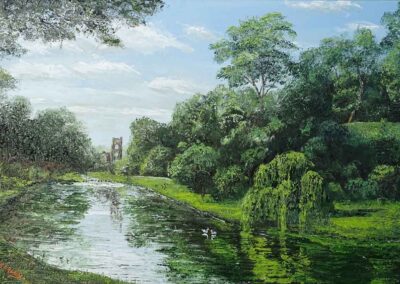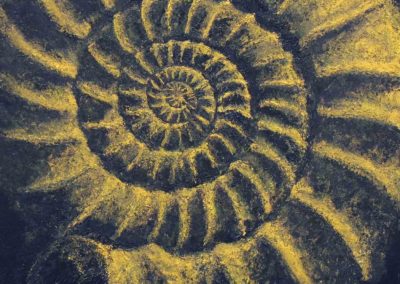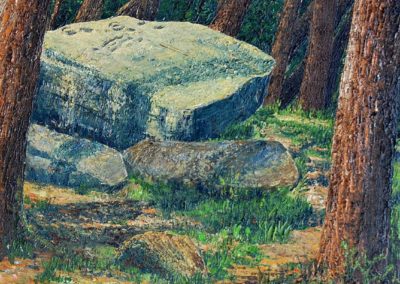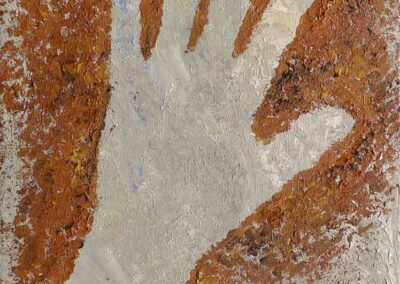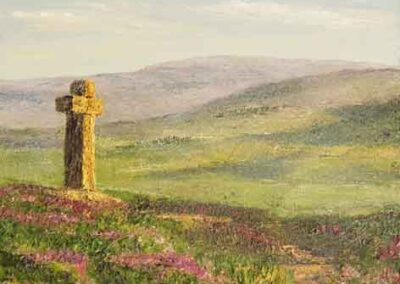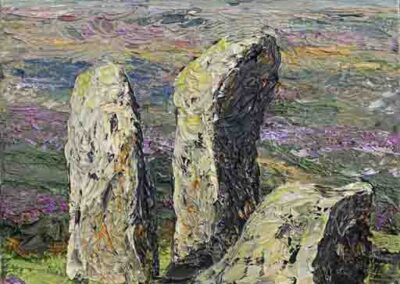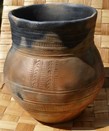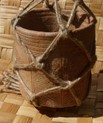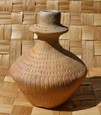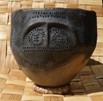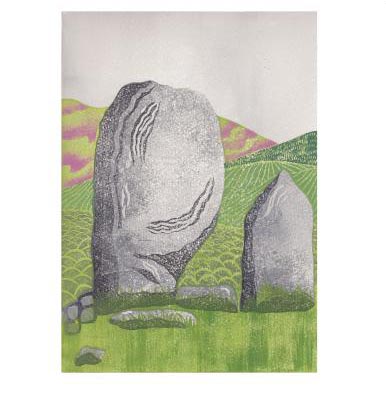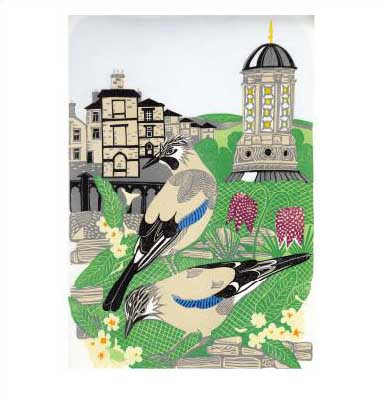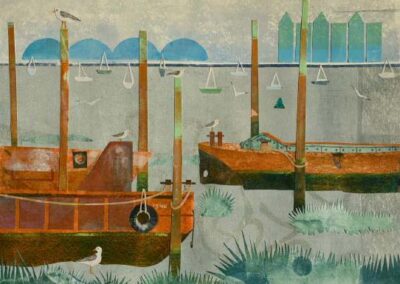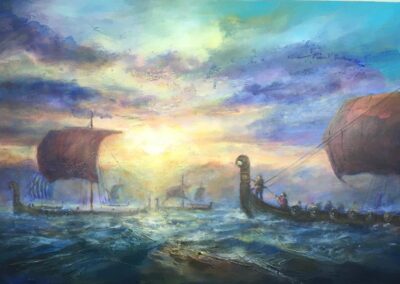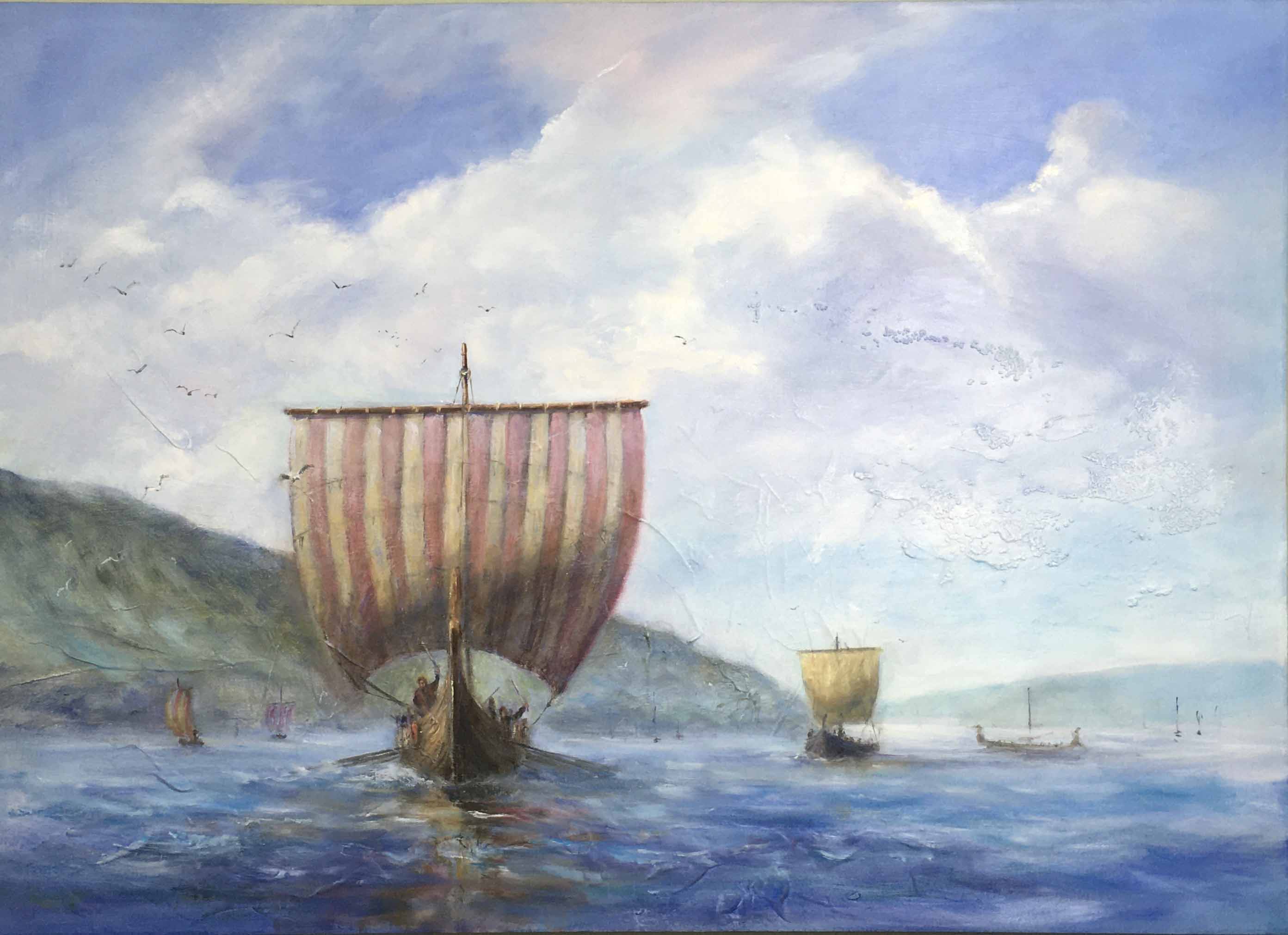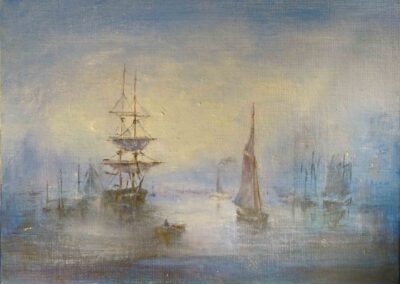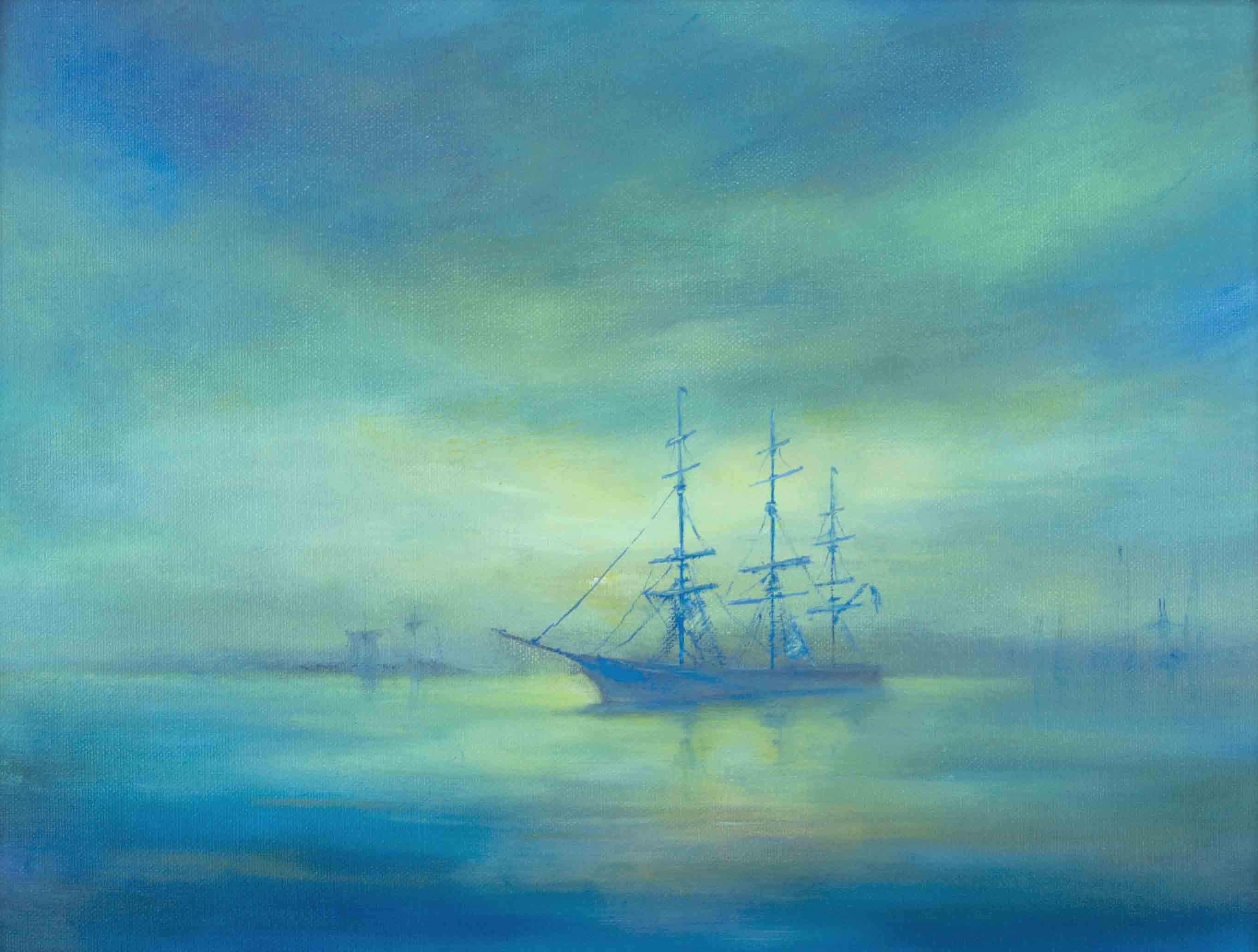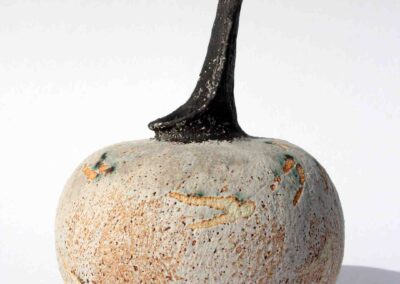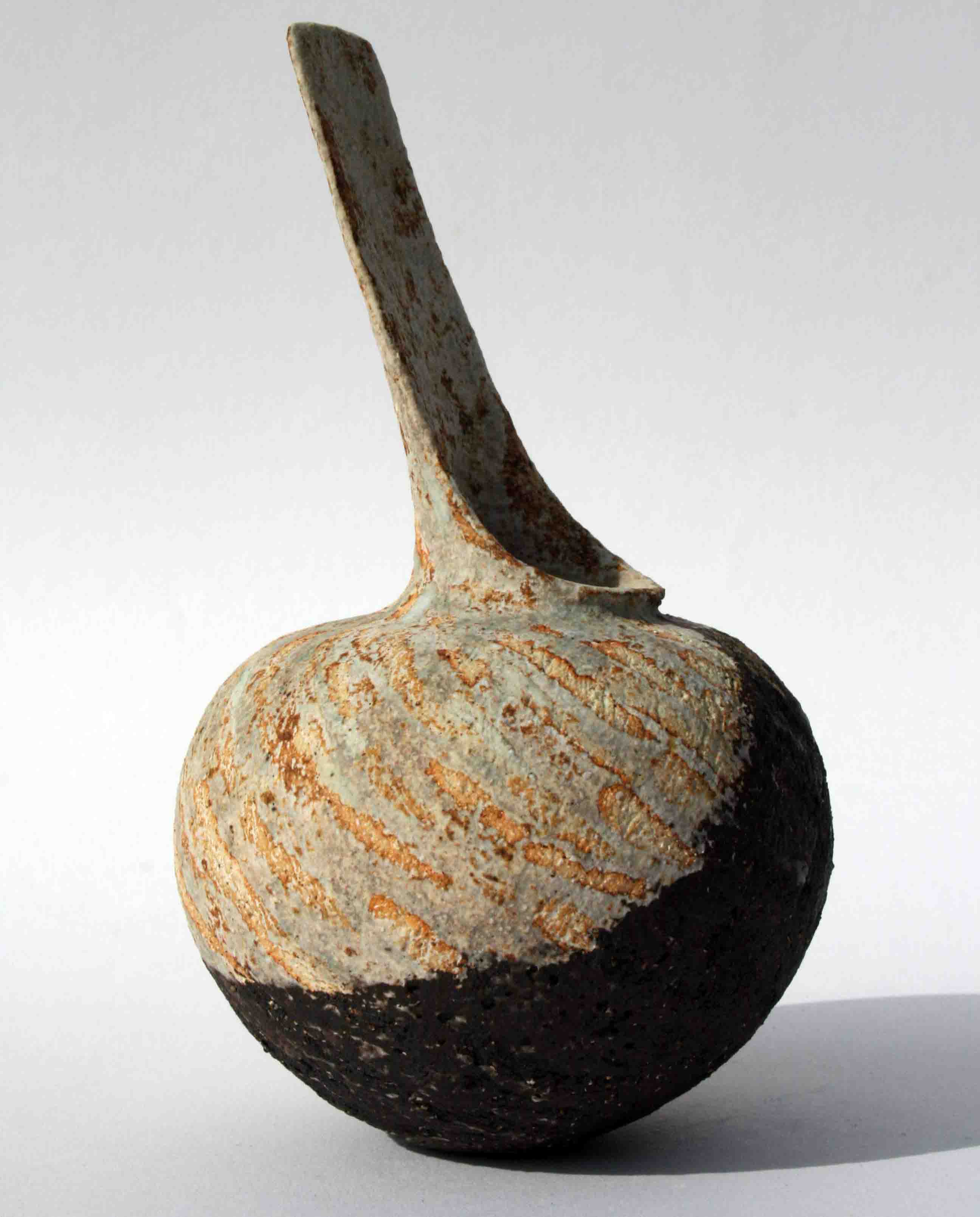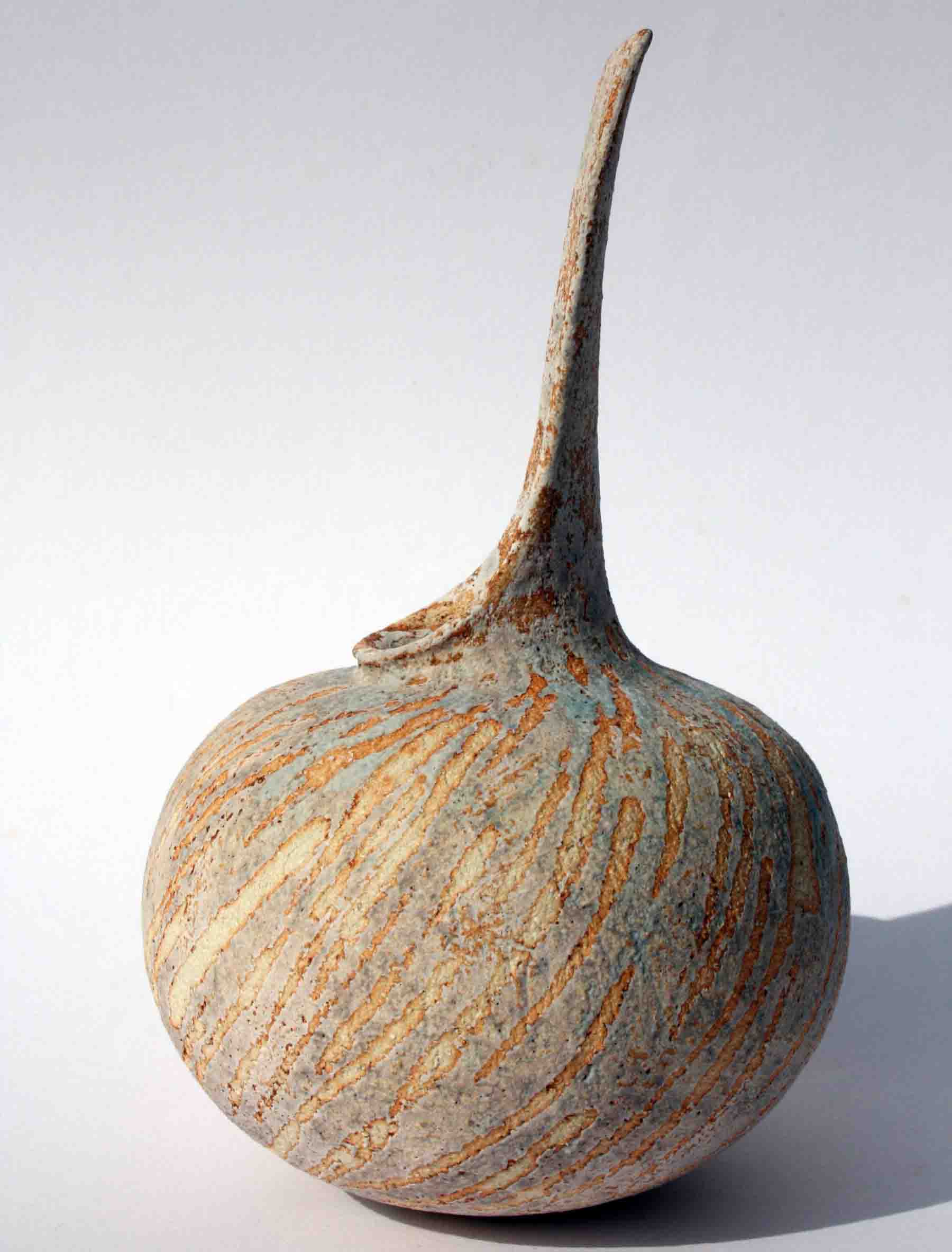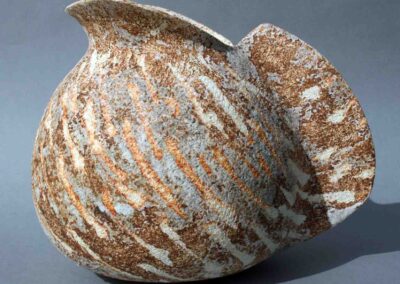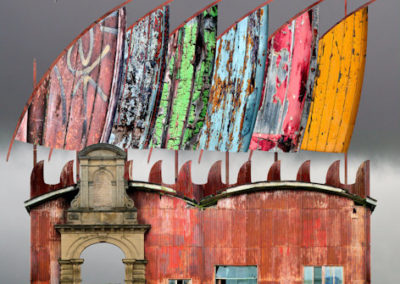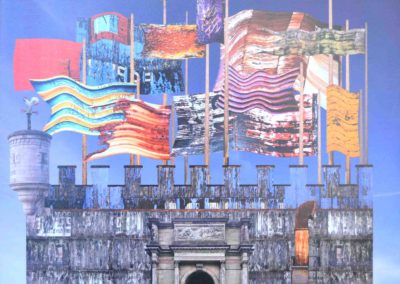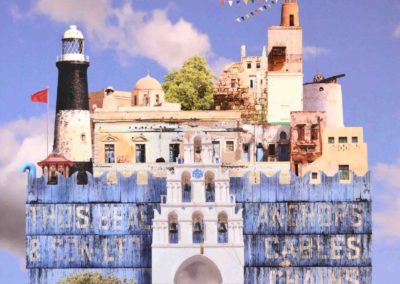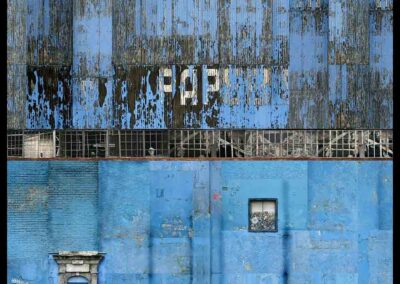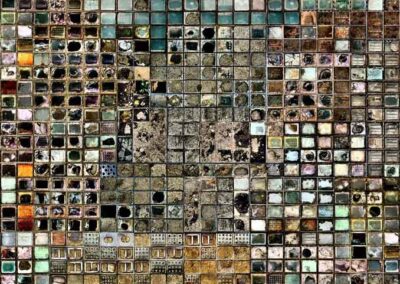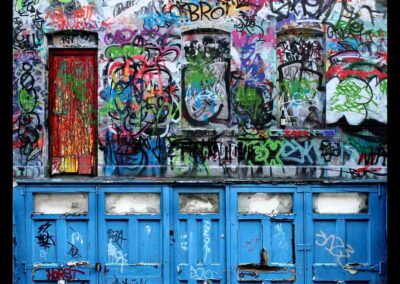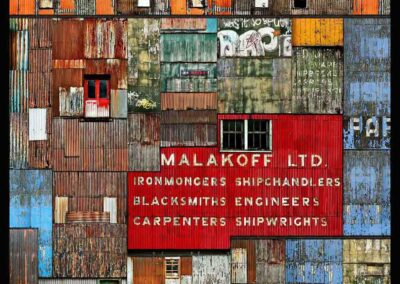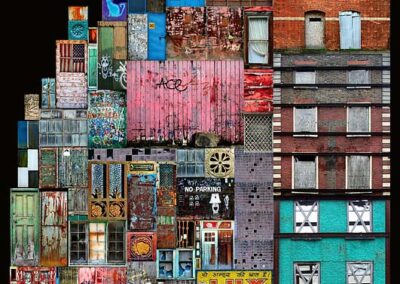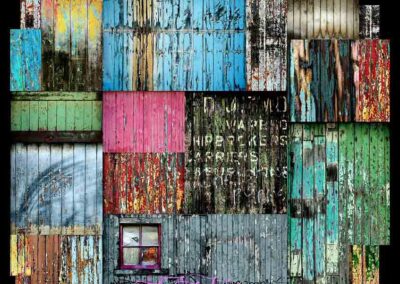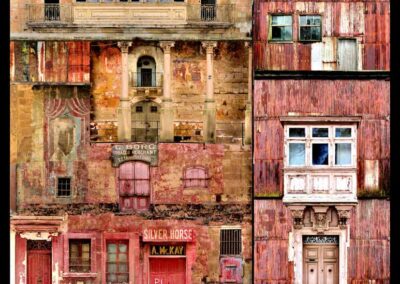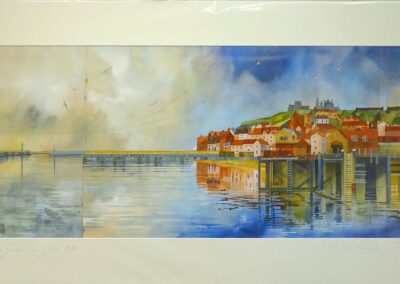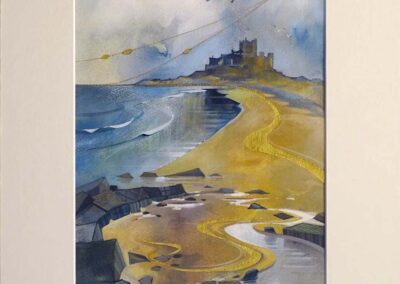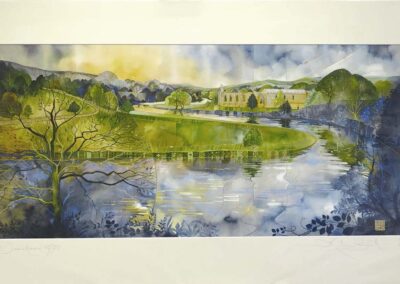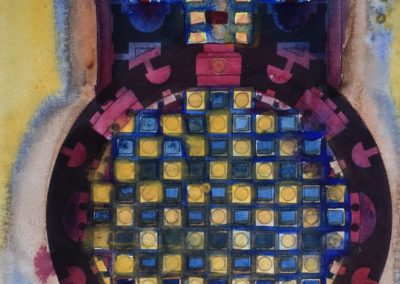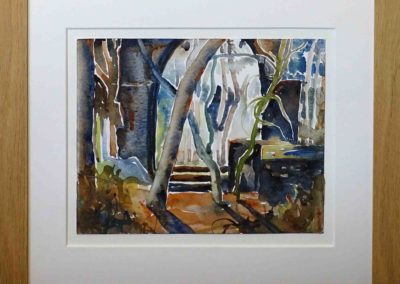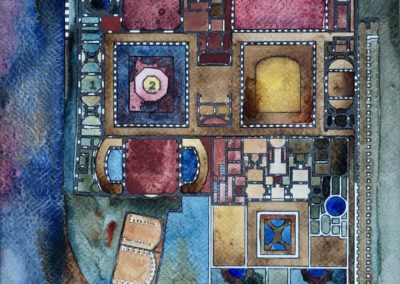Our new exhibition at the Bingley Gallery demonstrates the remarkable range of motivation behind those who draw on the past in creating their work. Many of the artists featured came to the subject not through art school but following study and work in the field of archaeology. No less than six have links with the pioneering School of Archaeological Sciences at the University of Bradford, suggesting art and science can be fruitfully combined.
David Starley Oil Painter
David Starley, one of several Bradford archaeological sciences graduates displaying in this exhibitio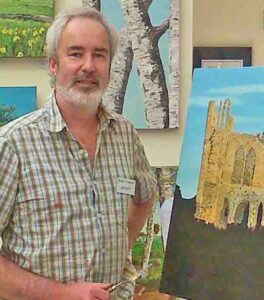 n. He worked for many years as a field archaeologist and metalworking specialist, until his oil painting hobby increasingly took precedence. Both art and archaeology run deep within him and it is therefore no surprise that his oil paintings often incorporate features from the past, such as the Twelve Apostles Stone circle on Ilkley Moor. ‘We live in landscapes which, whether, urban or rural, show evidence of generations of our forebears. Reading the physical evidence of past human activity in our surroundings gives another dimension to our understanding of our environment and our place in it.’
n. He worked for many years as a field archaeologist and metalworking specialist, until his oil painting hobby increasingly took precedence. Both art and archaeology run deep within him and it is therefore no surprise that his oil paintings often incorporate features from the past, such as the Twelve Apostles Stone circle on Ilkley Moor. ‘We live in landscapes which, whether, urban or rural, show evidence of generations of our forebears. Reading the physical evidence of past human activity in our surroundings gives another dimension to our understanding of our environment and our place in it.’
Mike Copper: Replica Prehistoric Ceramics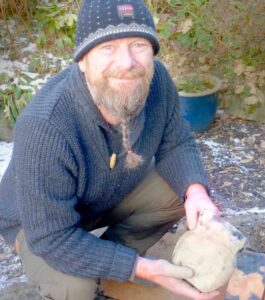
For Mike Copper, a post-doctoral researcher at the University, firing ceramics provides a means of understanding the technology of a craft in its earliest, Neolithic, years. Ceramics at that time may have been relatively crude, but clearly much time and effort was spent, not only making functional vessels, but also decorating them with a symbolism that we can only guess at. Mike’s most recent firings investigate the use of different fuels to heat primitive pit furnaces, including sheep dung! The vessels present
a very different aesthetic to contemporary pottery, much of their charm lies in their deceptive simplicity. Features such as the darker fire clouds from the smoky fuels and slight irregularities of form impart not only their own beauty but evoke an emotional link with our ancestors who pioneered such techniques up to six thousand years ago.
Alison Deegan: Linoprinter
Alison Deegan is landscape archaeologist with a specialism in identifying archaeological features from aerial images, including traditional photo reconnaissance and its more recent development using lasers in LIDAR survey. Her understanding of the landscape as a sequence of layers formed over millennia is reflected in Alison’s artistic practice. She uses lino cuts to express the structure of a landscape, either through bold, single-colour prints or building layers of colour and texture to create more complex and intricate images. For Alison, printmaking is a release from the accuracy and objectivity demanded for her archaeological work, and the physical process of lino cutting and printing is an escape from the digital workspace.
Alison Deegan AD08 ‘View Across Bagh Thiarabhage, Barra’ Lino print 40x30cm mounted but unframed £35
Alison Deegan AD06 ‘Two Jays at Saltaire’ Lino print 40x30cm framed £100 unframed currently out of stock
Clarke Avery: Oil and Acrylic Painter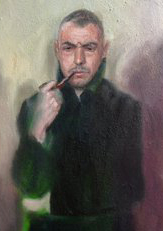
Painting is a still older activity than pottery. Whilst new means of binding pigments to a surface have been developed, and art styles have come and gone, the process of producing an original artwork has changed little. Clarke Avery, a Bradford graduate, uses archaeological knowledge to recreate past landscapes in oils or acrylics including Bronze age villages, steam locomotives or seascapes with Viking ships battling the elements. Each work is an evocation of the age rather than simply a likeness of scenery.
 Lis Holt: Coil-Built Ceramics
Lis Holt: Coil-Built Ceramics
Lis Holt allows her ceramic vessels to diverge considerably from the early Aegean art that inspires them. Amongst her influences are the times spent exploring dusty museums during holidays abroad. She keeps to the older technique of coil building (wheel throwing was a much later development) and produces beautifully elegant forms, decorated with glazes that are resonant of the early civilizations of the eastern Mediterranean.
Daniel Shiel; Photo Composites
Composites
Daniel Shiel is a geophysical surveyor who draws on his career in archaeology and his childhood love of ruins. The processes of decay and the marginalisation of once important structures are central to his imagery. His media is photography, with collections of images being re-modelled into new constructs with rich textures and patterns which appear to have histories of their own.
Daniel Shiel DAN25’The_Arch_of_the_Sails’ Digital Photo on Dibond._54x54cm 2of25 £195. Aso as card mounted print 50x50cm £120
Kate Lycett: Embellished prints from watercolours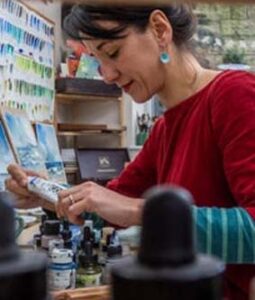
Kate is a Hebden Bridge based artist, whose early influences include, aged 9, being taught technical drawing by her grandfather. More formal training included studying fine art at St. John’s in York, where she specialised in textile design. When commercial design work failed to enthuse her, she returned to painting and has built a strong reputation and a loyal fan-base.
She describes her style as follows “My textile design background is always present in the way that I paintand interpret what is around me. I see patterns in everything; the hills adorned with houses and washing lines, rows of flower pots and stripes of brightly painted drain pipes. Lines of gold thread trace paths through the landscape, and gold leaf changes the surface of my pictures with the changing light of day. I want to paint beautiful pictures of the places that I love. There are never people in my pictures but they’re full of life and warmth.”
Gavin Edwards: Wood Panels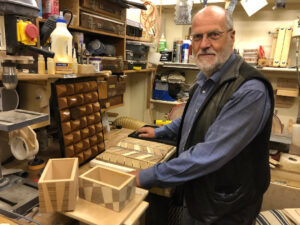
Wood is a material central to human culture in the past, though its survival from the distant past requires very unusual conditions. Gavin Edwards, previously a field archaeologist and archaeological curator, understands how people in the past made best use of its physical properties – but also appreciated its beauty. Working with wood is Gavin’s latest career choice, taking the opportunity to explore where his love of wood might take him. Much of the timber he uses has past histories, whether as furniture veneers or humble pallets, but also bears the marks of the growing environment of the tree. The intrinsic beauty of the structure of the wood is brought out by careful preparation and sanding and a coat of wax, with different elements combined and displayed in decorative panels.
 L. Amy Charlesworth: Oil Paintings
L. Amy Charlesworth: Oil Paintings
Amy Charlesworth, one of the exhibition’s few trained artists, works in oils in a hyperrealist style. Viking mythology is brought into focus with a dramatically painted raven, ‘Ode to Odin’, for which she expanded her skill range to craft a runically inscribed wooden frame.
Kath Bonson: Ceramics
Darrell Evanes: Resin Sculpture
Leeds born Darrell studied B.Tec. National in Art & Design at Harrogate College between 1990 and 1992, followed by a BA (Hons) in fine art sculpture at Bretton Hall, Leeds. Darell’s sculptures are built from found materials and huge imagination. They appear as fragmentary objects, captured in fragments of time within three-dimensional space. Powerful and thought provoking.
William Morrison Oil paintings
William Morrisson’s work falls into the long British tradition of landscape art. William’s paintings may include thin layers or thick impasto oil paint, much like the built-up strata of a moorland landscape with its layers of bedrock peat and heather, such that the painting conveys a feeling of time and place.
Evelyn Friend: Oil Painting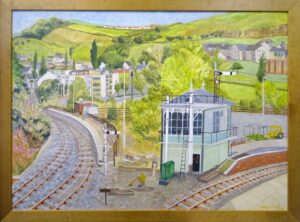
Contact with Evelyn came through Jane Fielder, former owner of the Bingley Gallery, suggesting I should take a look at her work to include it in a show. After some delays Evelyn arrived at the gallery with a piece she refers to as her magnum opus under her arm – it’s apparently been in the making for 33 years with a total of over 80 hours work. The view is a local one, of the railway junction box that was once sited near Shipley station. Evelyn’s style is joyfully naive, but the work is beautifully executed and has enormous charm. Evelyn describes herself as a versatile artist, in terns of media and subject, with a long life of painting experience since studying at Harrogte Art College in the late 1950s/ earlly 60’s.
Jane Fielder
Whilst well known for her ‘Janescape’ depictions of Bingley and it’s surroundings, Jane is a very versatile artist and i was happy to find several works that fitted the theme of the exhibition, including two watecolous of the St David’s Folley above Bingley and three watercour embellished prints of illustrations of Roman ruins.
Jane Fielder JF233B ‘Ruin Bank Woods, near St David’s Folly, Wilsden’ Watercolour 17x18cmin solid oak frame 42×43 £160
Jane Fielder JF232B ‘The The Arch, St David’s Folly, Wilsden’ Watercolour 28x22cmin solid oak frame 48×43 £250
Rob Thomson
Rob (Tom) Thomson is a former architect . His drawing board skills ensure an unusual degree of precision in his usual architecturally-themed studies. Here we see a slightly more relaxed approach, tackling a more diverse range of subject matter, such as abandoned classic cars which are depicted with affection and empathy. Tom is an active member of the international group Urban Sketchers





